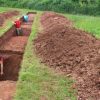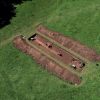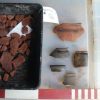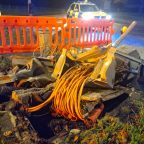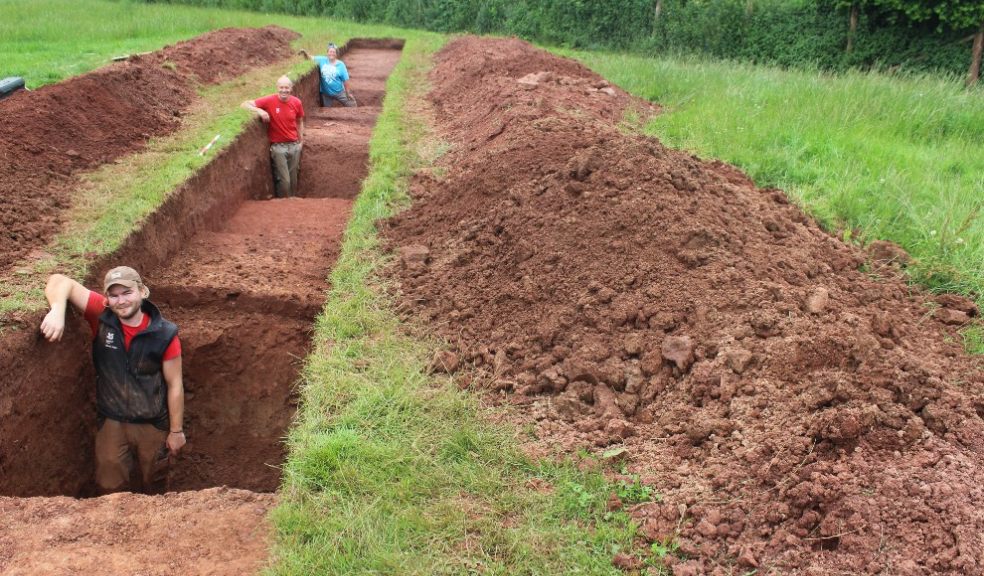
National Trust confirms its first Devon Roman fort
The first Roman fort on National Trust land in Devon has been confirmed at a site on the Killerton estate. A fortnight’s dig at Budlake Farm, on the estate, has proven a long-held theory that a First Century Roman fort was sited there.
The Devon fort joins a list of over 100 Roman forts on National Trust land around the UK.
Led by Trust archaeologist Martin Papworth, a team of archaeology volunteers and staff found evidence of a triple-ditched fort enclosure as well as a coin, samian pottery and ironwork thought to be from between 50-70 AD.
During a flight over the Killerton estate in 1984, archaeologist Frances Griffith saw something in the landscape that looked like a fort, which had been revealed by the really dry summer of that year. In the years since this discovery, walking the field and examining the soil after ploughing has discovered little more than some Victorian flowerpots and fragments of cider bottles. However, during the summer of 2019, the National Trust were able to do a geophysical survey which confirmed the fort ditches and discovered a gateway on its south side.
Martin Papworth, archaeologist said, ‘The two surveys revealed the triple-ditched outline of the fort. The geophysics helped us target the best places to locate our trenches. The first piece of Roman pottery, the base of a storage jar, was only found on the third day of the dig, so we began to doubt whether this was a Roman site at all. But, as we excavated deeper, more finds emerged from the soil. These included samian pottery from Gaul, fragments of ironwork and a corroded bronze coin, which still needs to be identified. Once the three deep ‘V’ profile fort ditches were excavated, we could imagine how difficult it would be for hostile forces to capture this heavily defended Roman outpost 2000 years ago.’
Fi Hailstone, Area Ranger at Killerton leads a team of archaeology volunteers on the estate. Fi said, “Myself and the volunteers were thrilled to finally be able to don our trowels and explore this site. The dig was a highlight of the year and to be able to prove that the site, which had been rumoured for years locally to be Roman origin, was not only Roman but early Roman too, is really special. This discovery adds to Killerton’s already richly layered landscape history and we are really looking forward to dating some of the finds to colour in the detail of this site’s use and occupation.”
The fort is the first of its kind to be confirmed on National Trust land in the Devon area, and joins over 100 Roman military sites on Trust land across the UK. These include mile castles and garrison forts along Hadrian’s wall, Lake District forts such as that guarding the Hardknott Pass, constructed in a spectacular landscape setting. The 3rd -century Roman fort built on the Norfolk coast to guard against Saxon invaders at Brancaster. The earthwork fort built within the ramparts of Hod Hill Iron Age hillfort in Dorset and the coastal signal station constructed above the Exmoor cliffs at Martinhoe.
Below the Roman fort gateway the team found many fragments of flint evidence of people living here 5,000-7,000 years before the Romans built their fort. Charcoal was collected from a small pit full of Late Mesolithic to Early Neolithic flakes and tools. Radiocarbon analysis will date the site more precisely.
Killerton is a National Trust property near Exeter in Devon. For more information visit: www.nationaltrust.org.uk/killerton









